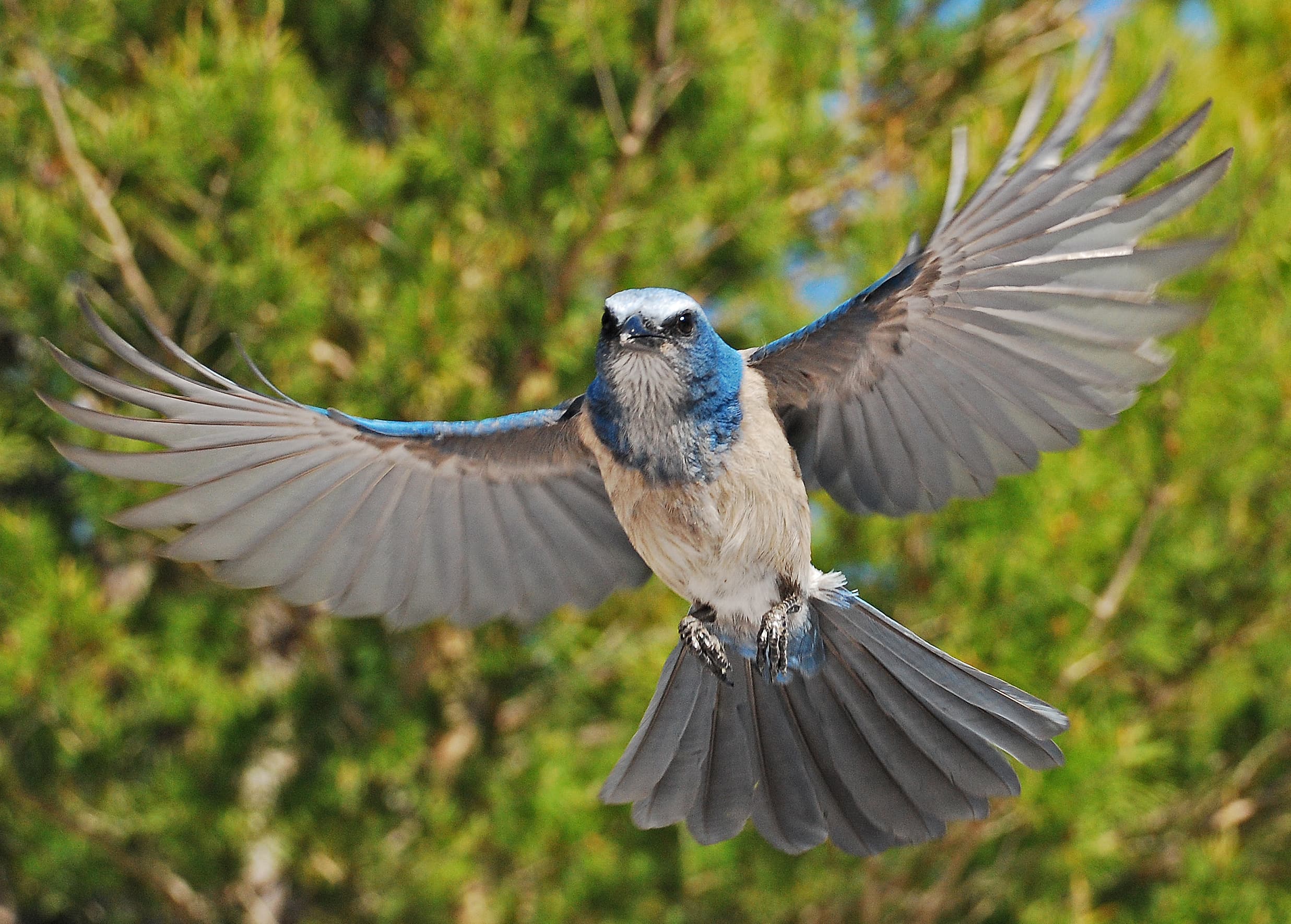 Photo by: Jessie Dickson
Photo by: Jessie DicksonGene Fly — How Lake Wales Ridge Scrub-Jays are Connected
Authors: Tori Bakley & Sahas Barve
One morning last July, Dr. Sahas Barve, the John W. Fitzpatric Director of Avian Ecology at Archbold Biological Station, received several excited text messages from Kelly Roberts, an Archbold Avian Ecology Research Assistant. They read, “WW-XH from ‘BNCH’ territory lives at Lake Placid Scrub now! Good to see him again!” Kelly was conducting Florida Scrub-Jay surveys in a tract of oak-scrub managed by the Florida Fish and Wildlife Conservation Commission (FWC). This male scrub-jay, identified by the unique combination of colored leg bands (two white bands on the right, and a metal and hot pink band on the left), was born at Archbold Biological Station in 2019. After staying with his family for three years, he had now moved two miles, across Highway 70, to settle in a new patch of scrub and start his own family!
Two miles is far for a Florida Scrub-Jay! Florida Scrub-Jays are adapted to fly slow and low as they forage for insects, lizards, and acorns in the compact Florida oak-scrub. Their short, rounded wings are, however, not well-suited for long flights. Contrast this with the wings of swifts and swallows which are long, narrow, and pointed, allowing these birds to stay on the wing for days at a time! Short wings and specific habitat preferences have led the jays to be hesitant to fly across large habitat gaps such as pastures or busy highways. This is especially true if they don’t know of, or can’t see, suitable habitat on the other side. In biological terms, Florida Scrub-Jays have low dispersal ability.
The low dispersal ability of Florida Scrub-Jays means that individuals rarely move between habitat patches that are separated by just a few miles. If jays don’t move between populations, it reduces gene flow, increases the relatedness between individuals in a population, and leads to increased inbreeding, a situation that is bad for the long-term viability of the population. Kelly’s observation of WW-XH at Lake Placid Scrub was hence a significant one! This brave male had left his home territory, likely flown through an orange grove and across a busy highway to get to his current location. This is encouraging evidence that Archbold and Lake Placid Scrub are still connected with successful Florida Scrub-Jay gene flow between them! Yet how often do jays make such big movements across habitat gaps?
<-Caption: A Florida Scrub-Jay mid-flight showing their typical short rounded wings built for a life navigating the dense oak scrub understory. Photo by Jessie Dickson.
For the past 29 years, Archbold scientists have been studying Florida Scrub-Jays at numerous sites across the Lake Wales Ridge. From Avon Park Air Force Range in the north, to FWC’s Gould Road tract in the south. Just like at Archbold, researchers at these sites put color bands on the jays and monitor individuals across years. Sometimes, a bird banded in one place shows up in another— this is exciting news for bird biologists! By tracing where a bird came from, one can study the intervening habitat and deduce which habitat types are porous to Florida Scrub-Jay movement. We can then use this information to identify habitats that may support gene flow and inform land management and Florida Scrub-Jay conservation.
.jpg&w=3840&q=75) Photo by: Tori Bakley
Photo by: Tori BakleyCaption: Bird biologists use unique color-band combinations to identify individual birds. This one is YRX-, Yellow-Red-Metal in the right, nothing in the left. Photo by Tori Bakley.